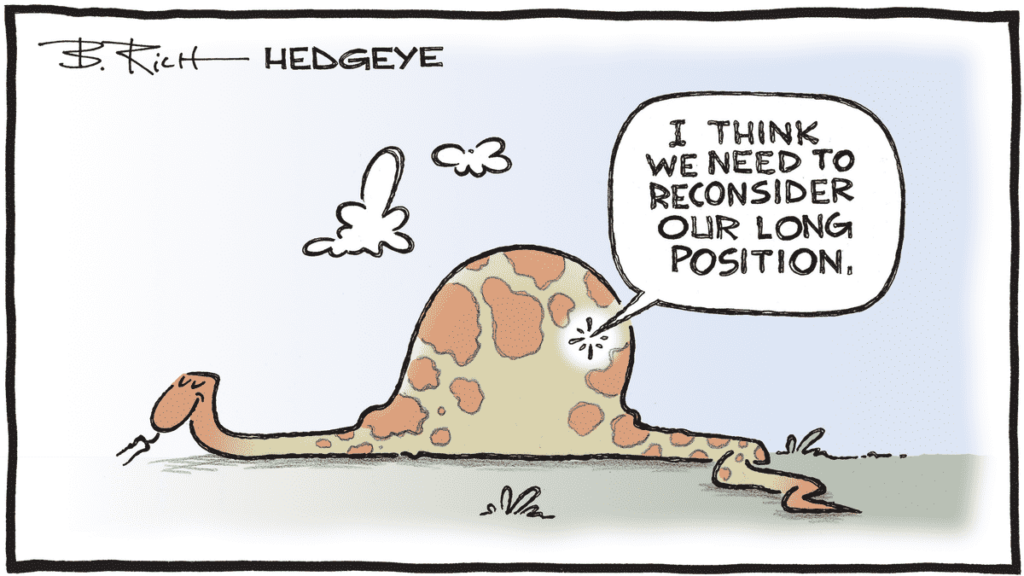
Well, I don’t know about you, but when I started in this business, there were several categories of “clients”—or, in other words, investors. There were the short-term ones, who only thought about making money quickly and spending it even faster. Then there were the medium-term investors, who bought assets for a few months, just to ride the trend. And finally, the long-term ones—the Warren Buffett aficionados or the guys managing the AVS fund.
Well, that era seems to be over because, for some time now, it feels like we’ve been living with our noses to the grindstone more than ever, and suddenly, everyone is a trader.
Everything moves too fast
I don’t know if it’s because technology is advancing so quickly that nobody wants to hold onto positions for too long anymore, since there’s always some breaking news that’s going to change everything tomorrow. No one wants to take risks by looking beyond the immediate. Today, we can’t even see past the next economic figure, and as soon as we get it, we immediately move on to the next. That pretty much sums up yesterday’s market session.
We started with a figure that surprised everyone in Germany: the IFO index. For those who may have forgotten, the IFO is a meaningless survey that spits out a number supposedly measuring German business confidence. And this month—oh, surprise—the figure was excellent. You might hear some sarcasm in my voice, and you wouldn’t be wrong. I say this because when reading the press this morning, journalists seemed shocked by how “good” this figure was. But there was really no reason to be surprised since, just three days ago, Germany approved a stimulus package of over €500 billion. If you’re an entrepreneur, you’d have to be pretty demanding not to feel a boost in morale after getting what is essentially a blank check—especially if you’re in the arms industry.
Confidence takes a hit
The IFO index came in at 86.7, up from 85.3 last month, helping European markets close in the green. That, plus the ongoing self-convincing that Trump’s tariffs—set to be announced on April 2—might be more “targeted” than expected, and that everything might turn out fine after all. So, with a number suggesting that Germans are optimistic (now that they’re all thrilled about being allowed to rearm) and with the euphoric optimism over Trump’s tariffs, the DAX and CAC managed to close in the green. Well, mostly the DAX, because when you close with a 0.00% variation from the previous session, like the CAC did, you can’t exactly claim you finished up.
And then we got the U.S. consumer confidence figure. I won’t lie—it was pretty terrible, nothing worth losing sleep over, even though the indices still closed higher. American consumers are starting to lose their smiles and find everything a lot less amusing. And no, it’s not just because McDonald’s raised the price of the Big Mac. No. Consumer confidence just tanked by 7.2 points, landing at 92.9—lower than the Swiss football team’s morale after a World Cup exit. We haven’t seen numbers this bad since January 2021. And expectations for the next six months? In free fall at 65.2. A 12-year low. Who do we have to thank for this? Uncertainty, inflation, and… of course, Donald Trump.
Let’s also not forget that this is the fourth straight month of decline, with no signs of recovery on the horizon. Sure, it’s just a survey, not hard economic data, and we all know the value of surveys—especially considering that just yesterday, we learned that the French are supposedly growing more confident in Macron, which just goes to show that surveys are more science fiction than anything else.
Morale is in the gutter
Anyway, if we believe what we’re hearing, while Trump keeps throwing around 200% tariffs like others drop punchlines on X, American households are starting to really panic. Inflation is digging in, recession is lurking, and there’s a growing sense that this is all heading toward stagflation—that delightful 1970s cocktail of stagnating growth and soaring prices. Just the thing to pop a bottle of Dom Pérignon—if you can afford it after those 200% tariffs at U.S. customs.
On the political front, it’s still the usual dance—more like a mess of chaotic footwork. One day, Mexico gets hit with tariffs; the next day, they’re scrapped. Then comes a threat against Europe over wine and vodka, just to make sure nobody understands anything anymore. The result? Companies are tearing their hair out, investors are biting their nails, and consumers are staring at their wallets, wondering if they’ll have enough left for Black Friday shopping.
Meanwhile, Trump’s economic advisor, Stephen Miran, remains calm. He says—and I quote—”It’s more political than anything, no need to panic.” Okay, Stephen, but meanwhile, the Fed is starting to think it might need to step in. The job market is still holding up (thanks to that 4.1% unemployment rate), but for how long? Until next Friday???
Bottom line: Americans are doubting, prices are rising, and the economic compass is glitching. And this is all before the real effects of Trump’s policies even kick in. Hold onto your shopping carts—it’s going to get hot in more places than just the beaches this summer.
The numbers don’t look good
So, as you might have guessed, confidence is in bad shape. But as with every crisis, there’s always something positive to take away. Yesterday, some traders still managed to muster up the energy to buy at the close, hoping that if consumer confidence is bad, the Fed might loosen up and decide to help us out. Which makes sense.
But before Powell considers lending a hand, inflation will first have to show it is cooling off too.
See how easy it is to find our new market obsession for the rest of the week? Because right now, I can tell you that everyone will be rushing to the nearest church to light a candle, hoping that Friday’s PCE numbers come in lower—so we can finally say, This is it! The rate cut is coming in May!

Asia Counts on Tariffs
I don’t know if you remember what made us feel OPTIMISTIC yesterday. In case you forgot, it was simply the assumption that Trump wouldn’t be as harsh as expected when announcing his tariffs on April 2, and that, in the end, things would turn out fine. But we still don’t know if this is just speculation or if someone out there actually knows something. Basically, yes, it’s speculation.
So, this morning in Asia, we’re playing the same theme again, which explains why the Nikkei is up by 1%, while Hong Kong is sympathetically rising by 0.2%, and China is doing nothing. Yes, I admit it—we’re not exactly super convinced if that’s all we’re getting in terms of gains. But we still need some kind of narrative to keep you awake—because on my end, staying awake isn’t easy.
By the way, we should also note that Australia released weaker-than-expected inflation numbers, which sent everything skyrocketing over there, based on the idea that the central bank will lower rates. Just goes to show how basic investors’ thinking can be. Inflation drops? Rates go down. Employment drags? Rates go down. You know the equation.
On the oil front, we’re still battling around $69 per barrel. Gold remains at $3,050, and Bitcoin is trading at $87,500.
Today’s Key News
One thing to watch: the shadow of a U.S. recession is growing, darkening the outlook for consumers and CFOs alike—at least according to several economic sentiment surveys conducted in March. Around 60% of CFOs expect a U.S. recession in the second half of the year, according to a CNBC survey. Meanwhile, a Deutsche Bank survey indicates a 43% probability of an economic slowdown in the next 12 months, based on the average opinion of 400 people surveyed between March 17 and 20.
Wait—400 people out of 360 million Americans… Am I the only one who finds that a bit sketchy?
Meanwhile…
Over at GameStop, they announced plans to buy Bitcoin and USD-pegged stablecoins using cash reserves or future debt/equity issuances. Essentially, GameStop is following in Strategy’s footsteps. This wasn’t entirely unexpected, given that GameStop’s CEO has been all over social media with Strategy’s CEO. The stock still jumped 7% after hours.
The U.S. also blacklisted dozens of Chinese tech companies from exports, intensifying efforts to curb China’s AI capabilities.
Elsewhere, SAP has become Europe’s largest company, overtaking Novo Nordisk (makes sense—they keep shrinking). CrowdStrike climbed 3.3% after being upgraded from Neutral to Buy, with a price target of $431. The analyst also insisted that the “INFAMOUS OUTAGE” is now well behind them.
In the world of upgrades, Cloudflare got a double upgrade from Bank of America, going from Underperform to Buy. Analysts also raised their price target from $60 to $160.
This Morning’s Numbers
On the economic calendar, we’ve got Spain’s GDP, French unemployment numbers, U.S. Durable Goods, and oil inventory reports.
For now, futures are near equilibrium, and I won’t lie—everyone is waiting for Friday’s PCE numbers. And honestly? I’m terrified. Because I have no idea what I’m going to talk about tomorrow!
Let’s hope something happens. Let’s hope Trump speaks!!!
Until then, have a great day, and see you tomorrow!

